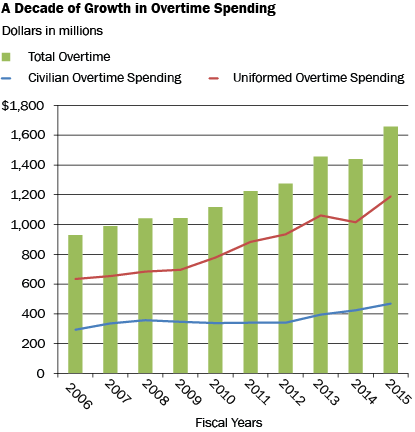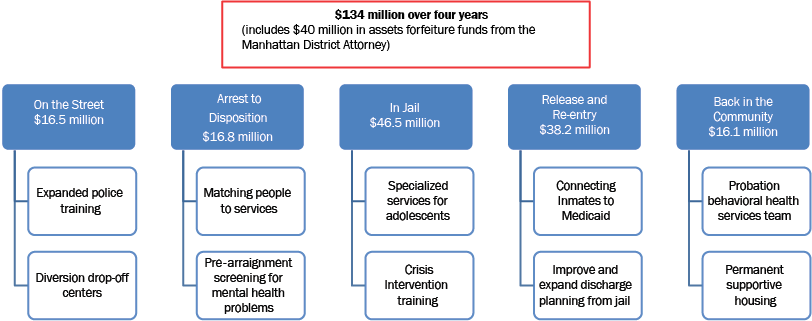Over the past 10 years, New York City’s overtime spending has increased from $928 million in 2006 to $1.659 billion in 2015, an increase of $731 million, or close to 80 percent (about 40 percent after accounting for inflation). While the increase in overtime spending over the 10 years appears sizable in dollar terms, as a share of total city spending the increase looks somewhat more modest: growing from 1.7 percent in 2006 to 2.2 percent in 2015.
- Uniformed personnel including police, fire, correction, and sanitation accounted for roughly 70 percent of total citywide overtime spending, with the cost increasing from $635 million in 2006 to $1.190 billion in 2015, an increase of $555 million, or close to 90 percent (about 45 percent adjusted for inflation).
- The city’s civilian workers, roughly three-quarters of the municipal labor force, accounted for the remaining increase in overtime spending. For them, overtime spending grew from $293 million in 2006 to $469 million in 2015, an increase of $176 million. About half of that increase, $89 million, was for civilian workers in the police, fire, correction, and sanitation departments.
- The agency with the largest increase in overtime spending over the 10-year period was the police department. Overtime spending for uniformed and civilian staff in the police department grew from $412 million in 2006 to $716 million in 2015, an increase of $304 million, or 74 percent. Uniformed staff accounted for $252 million of the increase and civilian staff $52 million.
- Though the dollar amounts were less, the fire department also had a 74 percent increase in overtime spending during the 2006-2015 period. Overtime spending grew from $194 million in 2006 to $337 million in 2015, an increase of $143 million ($124 million for uniformed personnel and $19 million for civilians).
- At the Department of Correction overtime spending increased by 180 percent, rising from $70 million in 2006 to $196 million in 2015, an increase of $126 million ($116 million for uniformed staff and $10 million for civilians).
Prepared by Frank Posillico
New York City Independent Budget Office
SOURCE: New York City Financial Management System
Print version available here.
| New York City By The Numbers |

